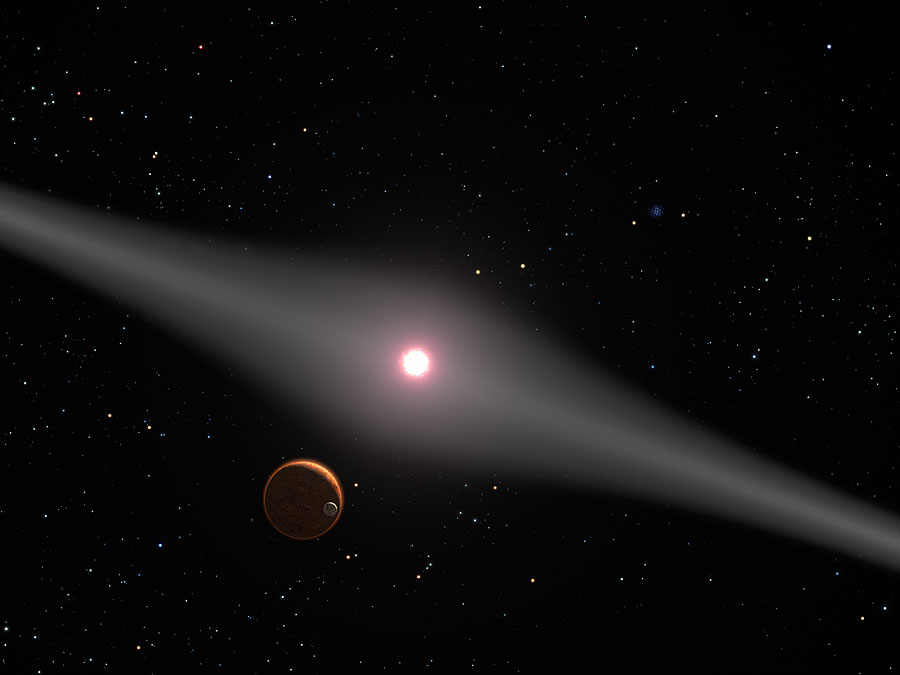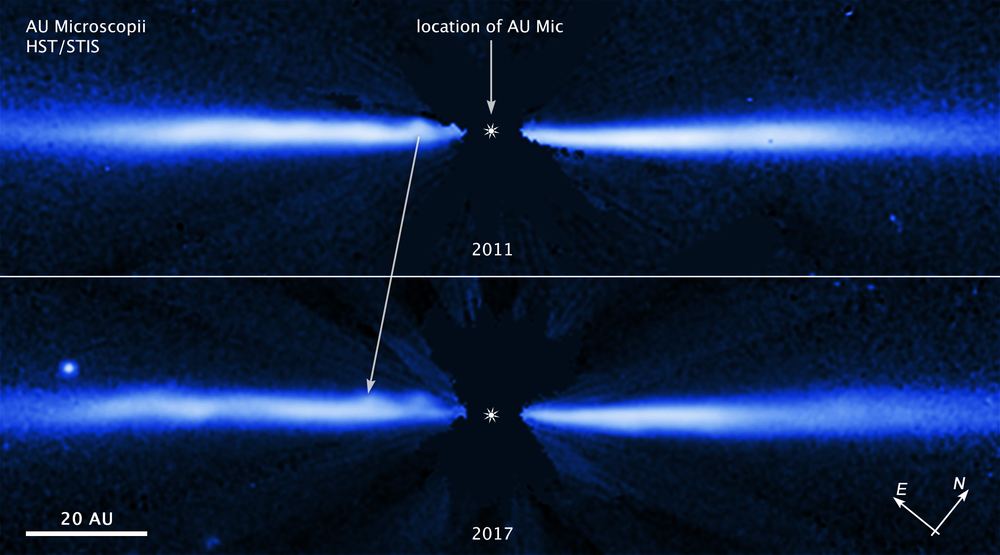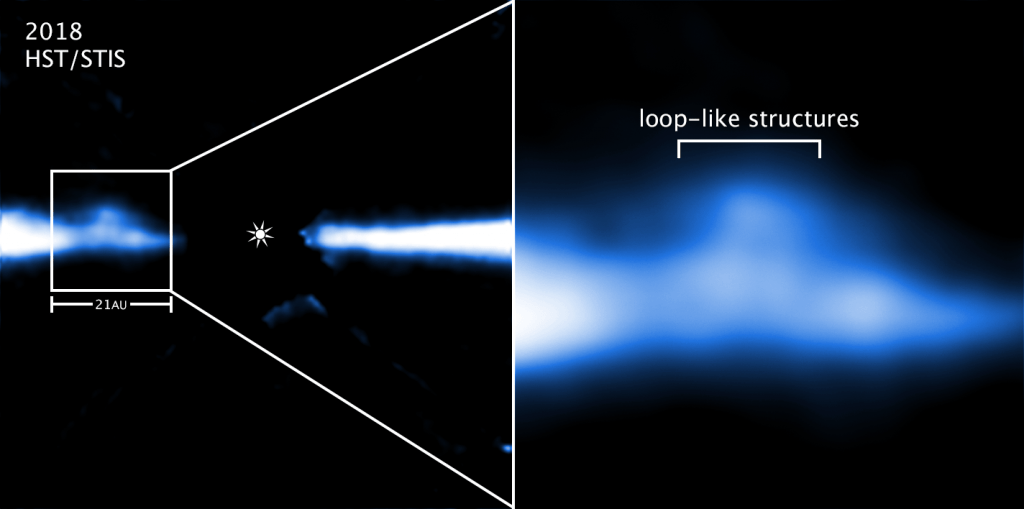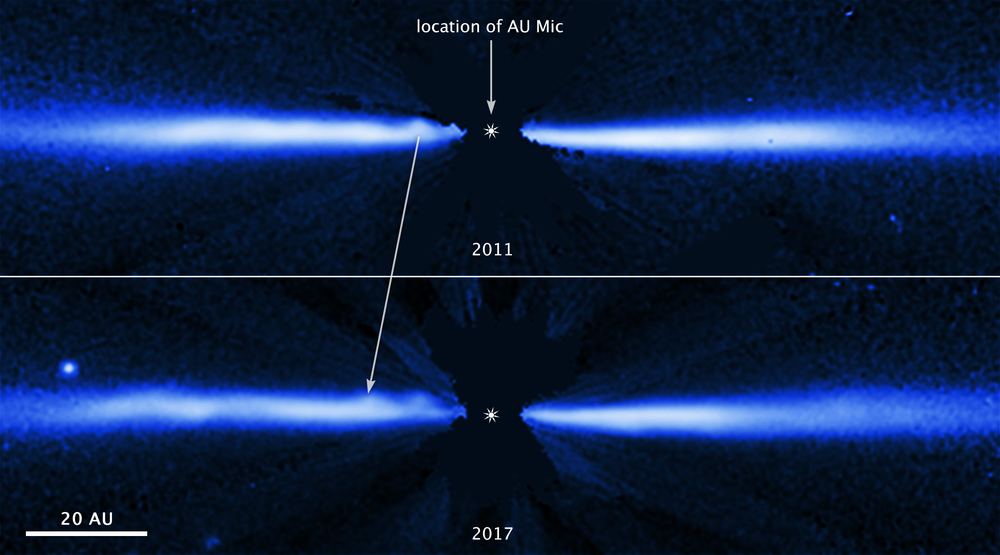New research from the Hubble Space Telescope and the ESO’s Very Large Telescope is dampening some of the enthusiasm in the search for life. Observations by both ‘scopes suggest that the raw materials necessary for life may be rare in solar systems centered around red dwarfs.
And if the raw materials aren’t there, it may mean that many of the exoplanets we’ve found in the habitable zones of other stars just aren’t habitable after-all.
From our Earthly vantage point, it’s easy to think that most stars are much like our Sun. It’s big and yellow and bright, and the stars we see in the night sky mostly appear the same. But that’s an illusion. In fact, the most common type of star is a red dwarf.
Red dwarfs are smaller and cooler than our Sun, and they make up about 75% of the stars in our Milky Way galaxy. That means that about 75% of the planets in the Milky Way are orbiting red dwarfs.
And as far as the search for life goes, that may be a big problem.

To understand the problem with red dwarfs and the raw materials for life, let’s look at our Sun and Solar System.
Stars form from massive clouds of gas and dust called molecular clouds. As gravity goes to work, material gathers in the center of the cloud. Eventually, after enough material gathers, the density and pressure become so great that fusion ignites, and a star is born. The type of star that forms depends on the initial mass of the star.
Most of the time, in our Milky Way galaxy anyway, a red dwarf is born. In rarer occasions, a star like our Sun is born. The leftover material from the cloud encircles the star as a protoplanetary disk, and eventually forms objects like planets, asteroids, and comets. What happens next in the solar system may be highly dependent on the type of star at the center.

As time went on in our own Solar System, Earth formed and then cooled. There was an abundance of comets and asteroids in our early Solar System, and they contained lots of water ice and organic compounds. Over a long period of time, many of these comets crashed into Earth, depositing their water and chemicals. Most scientists believe that this is where Earth got most of its water, and the chemistry needed for life.
The question is: Does this happen in red dwarf solar systems?
Carol Grady of Eureka Scientific in Oakland, California, co-investigator on the Hubble observations.
“These observations suggest that water-bearing planets might be rare around red dwarfs… ”
In our Solar System, our Sun is pretty stable. It flares and emits coronal mass ejections, but overall it’s relatively stable. The Sun did its thing and the planets and comets did their thing. But red dwarfs are different.
The new observations from the Hubble and the VLT of the red dwarf AU Microscopii show something different happening. AU Micro is a very young star, only 12 million years old, which is less than 1% of the Sun’s age. So we’re looking at a young star and solar system in its formative years. And these observations show massive globs of rapidly moving material sweeping through the young solar system.

NASA, ESA, J. Wisniewski (University of Oklahoma), C. Grady (Eureka Scientific), and G. Schneider (Steward Observatory)
So far they’ve seen six of these globs of material, and they’re rapidly eroding the disk of gas and dust encircling the young star. According to a press release, these globs are “acting like a snow-plow by pushing small particles — possibly containing water and other volatiles — out of the system.” And it appears to be happening quickly. The observations show that the entire protoplanetary disc could be gone in only 1.5 million years.
“These observations suggest that water-bearing planets might be rare around red dwarfs because all the smaller bodies transporting water and organics are blown out as the disk is excavated,” explained Carol Grady of Eureka Scientific in Oakland, California, co-investigator on the Hubble observations.
If these globs are clearing the young solar system of water, then comets won’t contain water ice that can eventually crash into young planets, delivering water and helping make them habitable. Organic chemicals are also raw ingredients for life, and if they’re being swept away quickly, then the prospects for life on planets around red dwarfs just took a big hit.
Carol Grady of Eureka Scientific in Oakland, California, co-investigator on the Hubble observations.
“The fast dissipation of the disk is not something I would have expected.”
“The fast dissipation of the disk is not something I would have expected,” Grady said. “Based on the observations of disks around more luminous stars, we had expected disks around fainter red dwarf stars to have a longer time span. In this system, the disk will be gone before the star is 25 million years old.”
Scientists aren’t yet sure what exactly the blobs are and where they came from. The obvious answer is the star itself, but scientists aren’t certain yet what the relationship between the AU Microscopii is. But through observations, scientists have learned a few things about the blobs.

The box in the image at left highlights one blob of material extending above and below the disk. Hubble’s Space Telescope Imaging Spectrograph (STIS) took the picture in 2018. The STIS close-up image at right reveals, for the first time, details in the blobby material, including a loop-like structure and a mushroom-shaped cap. Image Credit:
NASA, ESA, J. Wisniewski (University of Oklahoma), C. Grady (Eureka Scientific), and G. Schneider (Steward Observatory)
The blobs are moving at speeds between 14,500 km per hour (9,000 mph) and 43,500 km per hour (27,000 miles per hour,) fast enough to escape the star’s gravitational clutches. They currently range in distance from roughly 930 million miles to more than 5.5 billion miles from the star.
“These structures could yield clues to the mechanisms that drive these blobs.”
Co-investigator Glenn Schneider of Steward Observatory in Tucson, Arizona.
The blobs also have structure. One of them has a mushroom-shaped cap above the plane of the disk and a loop structure below the disk. These features may provide clues to what’s driving the blobs. “These structures could yield clues to the mechanisms that drive these blobs,” said co-investigator Glenn Schneider of Steward Observatory in Tucson, Arizona.
AU Micro is well-placed in space for observation. It’s only about 32 light years away, in the southern constellation Microscopium. Most of the other observable red dwarfs with the right conditions are much further away.
“AU Mic is ideally placed,” Schneider said. “But it is only one of about three or four red-dwarf systems with known starlight-scattering disks of circumstellar debris. The other known systems are typically about six times farther away, so it’s challenging to conduct a detailed study of the types of features in those disks that we see in AU Mic.” But to confirm this type of blob activity in other red dwarf systems, detailed study of other systems is essential.
Some of the observations of other red dwarf systems has already been done, and astronomers have identified similar blob activity in those systems.
“It shows that AU Mic is not unique,” Grady said. “In fact, you could argue that because it is one of the nearest systems of this type, it would be unlikely that it would be unique.”
The type of star that forms, and the conditions in the disk in the early days of a solar system, appear to be crucial for the formation of life. If 75% of the planets out there are orbiting red dwarfs, and those red dwarfs are emitting blobs that remove water and organic chemicals from the solar system, then any rocky planets there would remain dry and lifeless forever. That’s pretty bleak.
But all is not bleak when it comes to the search for life. We expect life to be rare. This just helps confirm it.
In any case, there are still the other 25% of stars, and all the millions of stars like our Sun. And we know of at least one planet that, as Carl Sagan said, is “…rippling with life.”
Despite these new observations, there still might be others. Just not around red dwarfs.
Sources:
- Hubblesite Press Release: Young Planets Orbiting Red Dwarfs May Lack Ingredients for Life
- Wikipedia Entry: AU Microscopii

